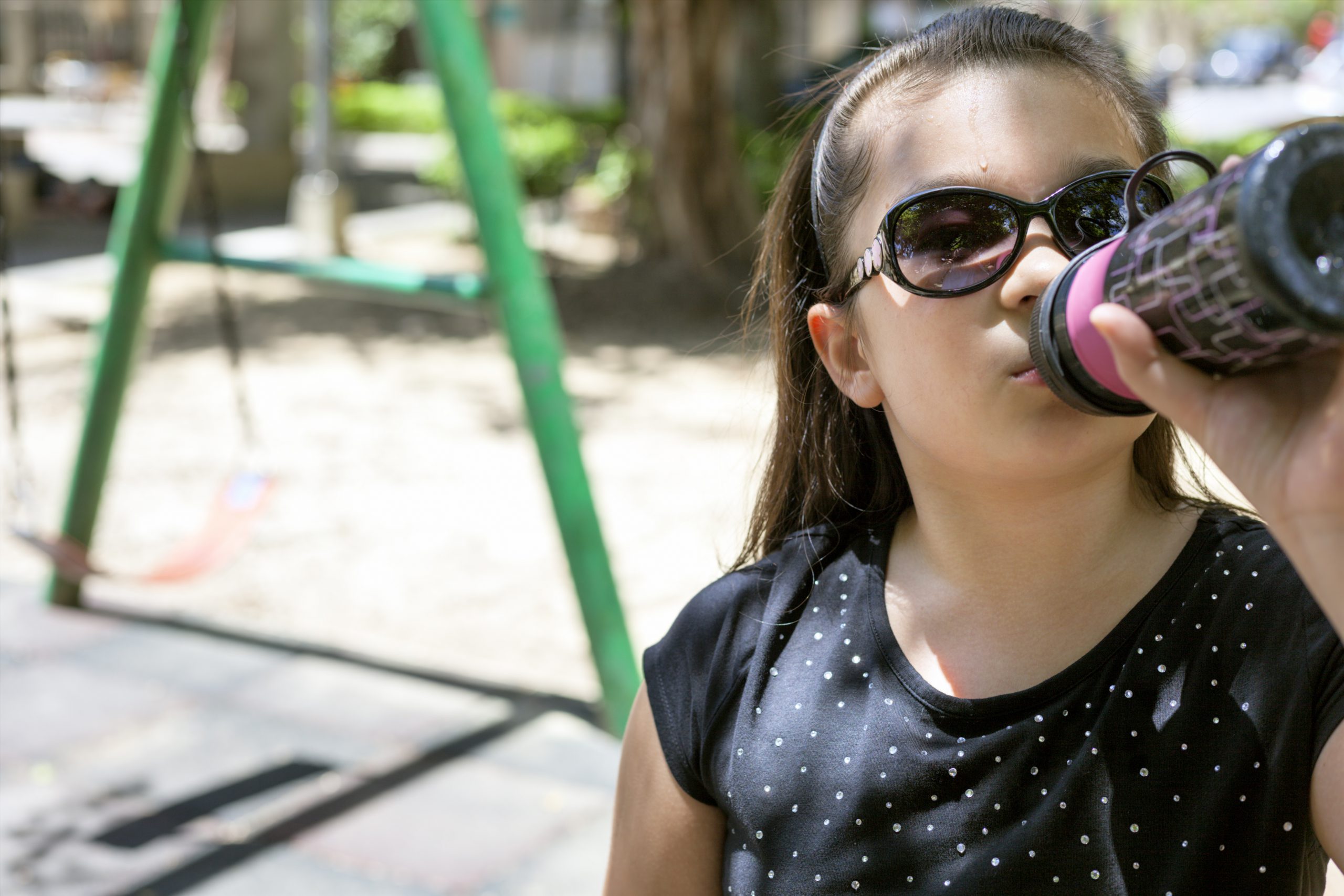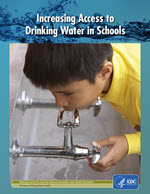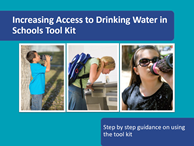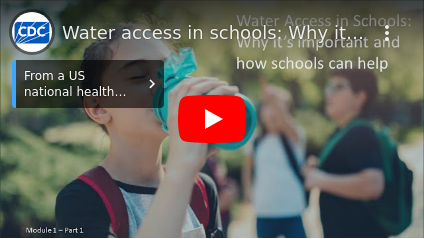Water Access in Schools

Providing access to drinking water gives students a healthy alternative to sugar-sweetened beverages. It helps to increase students’ overall water consumption, maintain hydration, and reduce energy intake if substituted for sugar-sweetened beverages.1-3 Adequate hydration also may improve cognitive function in children and adolescents.4-8 Drinking water, if fluoridated, also plays a role in preventing dental caries (cavities).
The Healthy, Hunger-Free Kids Act of 2010 requires schools participating in the National School Lunch Program (NSLP) to make free water available to students during meal times where they are served. The standards also require schools in the School Breakfast Program (SBP) to make drinking water available when breakfast is served in the cafeteria.
In addition to the requirements, schools can use a variety of strategies to:
- Ensure that water fountains are clean and properly maintained.
- Provide access to water fountains, dispensers, and hydration stations throughout the school.
- Allow students to have water bottles in class or to go to the water fountain if they need to drink water.
US Environmental Protection Agency (EPA) standards and regulations assure that public water supply is clean and safe before it leaves the water utility. However, lead plumbing parts (pipes, fittings, and fixtures) can contaminate water after it leaves the water main. Schools can test the water quality and have a plan in case there is contamination. In cases when tap water may not be safe to drink, schools can provide drinking water to students in other ways until the contamination can be fixed. This includes installing filtration systems or purchasing drinking water.
These short video training modules guide schools on steps to take to help students drink more water during the day. School staff will learn what can be done to ensure water is available, safe, and promoted as an ideal beverage choice.

- Increasing Access to Drinking Water in Schools [PDF – 150 KB] provides school health councils, nutrition services providers, principals, teachers, other school staff , and parents with information and tools to:
- Meet free drinking water requirements in the school lunch and breakfast programs.
- Help make clean, free drinking water readily available throughout multiple points in school settings.
- Promote water consumption as a healthy beverage.
-

Presentation: Increasing Access to Drinking Water in Schools Toolkit: Step-by-Step Guidance on Using the Toolkit [PDF – 2.32 MB] [PPTX – 12.7 MB] describes how to use the toolkit to meet federal drinking water requirements for school meal programs and help make clean, free drinking water readily available throughout the school setting.
The sections in the toolkit are available below for quick access.
- Background [PDF – 290 KB]
- Conduct a Needs Assessment [PDF – 373 KB]
- Develop a Plan [PDF – 201 KB]
- Put the Plan Into Action [PDF – 404 KB]
- Evaluate Progress [PDF – 174 KB]
- Appendix 1: School Drinking Water Needs Assessment Checklist and Planning Guide (Fillable PDF template) [PDF – 443 KB]
- Appendix 2: Diagram of Water Testing in Schools [PDF – 40 KB]
- Appendix 3: Examples of Water Dispensers for Schools [PDF – 68 KB]
- Appendix 4: Strategies to Overcome Potential Challenges [PDF – 37 KB]
- Appendix 5: Water Access Key Stakeholder Interview Questions [PDF – 136 KB]

